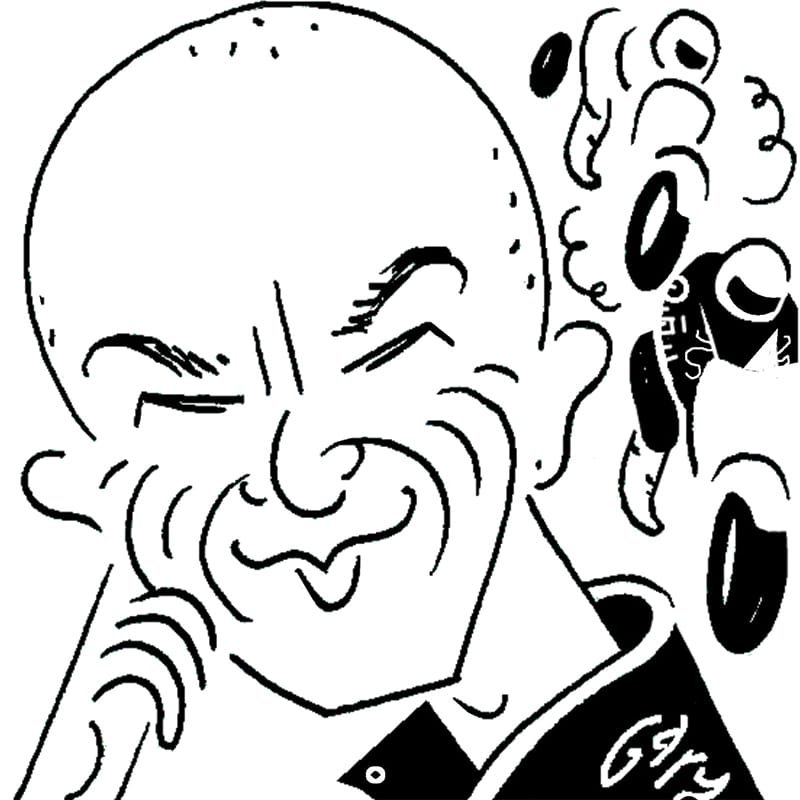Mat Oxley: Celebrating a century of the inline-four engine
“Bonmartini boasted that his bike would be a two-wheeled Bugatti”
Motorcycling’s most popular engine configuration celebrates its 100th birthday this year. For the last 50 years or so the inline-four engine has been the most popular configuration in sports and racing motorcycles. Indeed by the 1970s, when Japanese brands dominated the motorcycling landscape with inline-fours, someone came up with the term Universal Japanese Motorcycle (UJM) to highlight its omnipresence.
The first inline-fours were built at the dawn of the last century, with the cylinders arranged longitudinally in the chassis. This caused two problems: an impractically long wheelbase and overheating of the rear cylinders.
In 1923 two young Roman engineers had the bright idea of rotating the engine by 90 degrees, so the cylinder bank sat transversely. Piero Remor and Carlo Gianini worked in a tiny office near the city’s Piazza Barberini, where they drew up their first effort, a short-stroke, bevel-driven overhead-cam 490cc four that made 28bhp, three times as much as BMW’s newly launched R32 boxer twin. Remor and Gianini knew they were onto something, so went looking for money. They found investment from racer and World War I aviator Count Giovanni Bonmartini, who had recently established Compagnia Nazionale Aeronautica. Thus the engine got its first (of many) names: GRB, an acronym of the trio’s surnames.
Two years later Bonmartini founded a new company, Officine di Precisione Romane Automobilistiche, specifically to develop his motorcycle. The renamed OPRA won its first race, a hillclimb near Rome, in 1927, when its rider competed under the pseudonym ‘Littorio’, a nod to the fascio littorio symbol used by Benito Mussolini. Bonmartini was an enthusiastic supporter of the Italian dictator.
By 1928 Gianini and Remor had finished the second iteration of their creation, with double-overhead cams, water-cooling and a mighty 34bhp at 7000rpm. What they needed next was a rider capable of mastering this monster. Piero Taruffi was the son of a wealthy Roman surgeon who had made a name for himself riding AJS, Moto Guzzi and Nortons in local street races. He loved the OPRA so much that he declared, “Nothing can touch me.”
Taruffi was due to race the bike for the first time in the 1928 Royal Grand Prix of Rome, where he lined up with fellow Italians Tazio Nuvolari and Achille Varzi. Except Bonmartini decided to replace Taruffi at the last moment, so the aggrieved youngster reverted to his Norton single and used his considerable talent to win, while the inferiorly ridden OPRA broke a valve in pursuit. Later that year Bonmartini returned the bike to Compagnia Nazionale Aeronautica, now located at his huge base on the outskirts of Rome, which featured an airport, racetrack, engineering shops, foundry and factory. Mussolini opened the facility, christening it ‘Littorio’.
Bonmartini boasted that his bike would be “a two-wheeled Bugatti, destined for exceptional sportsmen”. He named the machine Rondine, after the CNA plane that had escorted Mussolini’s Blackshirts during their successful march on Rome six years earlier.
“No wonder Surtees was nervous when MV Agusta approached”
Taruffi returned to Bonmartini after contesting his first car races with Enzo Ferrari’s Alfa Romeo stable. His understanding of chassis technology was vital to harness the Rondine’s performance. By 1935 he was winning races throughout Italy and its North African colonies. And then another name change. The project was bought by Giuseppe Gilera, who wanted to put his eponymously named motorcycle business on the map. In 1937 Taruffi and the Gilera Rondine did just that. They established a new motorcycle land speed record by clocking 170.27mph on the Bergamo-Brescia autostrada. This latest iteration was supercharged and used a streamliner designed by another Italian aero company, Caproni, whose bombers Mussolini had used to drop mustard gas on Ethiopian tribesmen when he invaded Ethiopia in 1935. After World War II the Gilera four dominated the newly created world championships, taking 11 500cc rider and constructor titles during the 1950s, with Geoff Duke and others. Meanwhile Remor, a spiky individual, had fallen out with Gilera and was hired by MV Agusta, a new motorcycle brand founded by Count Domenico Agusta, whose father had established Costruzioni Aeronautiche Agusta after World War I.
Remor’s Agusta engine was largely a copy of the Gilera but nevertheless MV’s 500 four took a while to get right and gained a horrible reputation. Former 500cc world champion Les Graham was killed during the 1953 Senior TT when he lost control of his MV and his replacement, Ray Amm, died at Monza soon after. No wonder John Surtees was nervous when MV approached him to help fulfil the Count’s dream of winning the premier-class world title. Surtees insisted on riding the four before signing, then used his amazing riding and engineering skills to transform the bike into a winner. When Surtees secured the 1956 500cc title he commenced an astonishing run of MV successes: 34 rider and constructor crowns in 18 seasons, all the way through to 1974.
Honda was the first Japanese brand to build an inline-four. Its CB750 of 1969 was the original superbike and won Honda’s first big-bike victory, at Daytona in 1970. The current flagship superbikes from Honda, BMW, Kawasaki, MV, Suzuki and Yamaha all use inline-four engines. Remor and Gianini’s design still has life in it.
Mat Oxley has covered motorcycle racing for many years – and also has the distinction of being an Isle of Man TT winner
Follow Mat on Twitter @matoxley




































































































































































